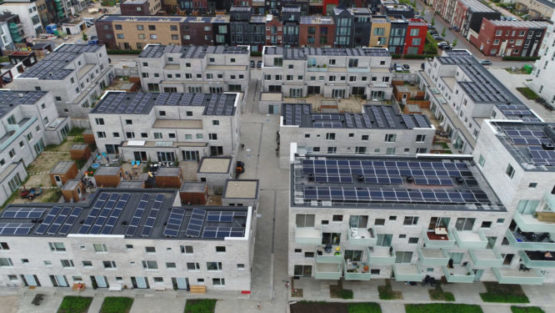

A Closer Possibility Than Imagined
Following the success of the first phase its Solar City Initiative –‘Solarise Dwarka’, which saw around 100 societies/apartment complex showing interest and signing-up for the initiative, BSES Rajdhani Power Limited (BRPL) has now launched the next Phase ( phase two) of the program.
The first phase that was hailed as the country’s first solar rooftop consumer aggregation program for residential buildings, will now be extended to the Shakur Basti area in the next phase. The phase two – ‘Solarise Shakur Basti’ was launched by Delhi’s Power Minister Mr Satyendar Jain on Sunday.
The Shakur Basti area is home to several colonies and has a substantial rooftop solar potential of around 15 MWp. according to BSES. BRPL is targeting to realise around 5 MWp of rooftop net metering from the area by 2019-20.
Commenting on the launch of phase-two, BRPL CEO Mr Amal Sinha said, “Solar energy is emerging as an important tool in our quest for sustainable growth. In a bid to realise its full potential, BSES is leading the efforts for its wide-spread and accelerated adoption in the national capital. Our Solar City initiative is promising to be a game-changer. Besides promoting adoption of solar, the initiative is a win-win proposition for both the consumers and the discom alike. The huge response to Phase one and the launch of phase-two of the initiative is a testament to this.”
Besides helping BRPL in meeting its renewable purchase obligation (RPO), which might even be considered as a key driving force behind the initiative. The discom expects the project to help minimise overloading issues in congested areas during the peak summer months. It will also help the DISCOM in achieving CAPEX deferment for line replacement and unplanned grid upgradation intermittently.
Under the first phase in Dwarka, the DISCOM claims that around 25 societies have installed solar capacity of 1.5 MWp and have already been energised or are about to be energised, with work at the remaining societies at different stages of completion. The rooftop solar tariff identified through competitive bidding in the case of Dwarka residents was Rs 2.66/kWh net of generation based incentive and around Rs 2.50/kWh less than the electricity tariff.
“The program also aims to educate consumers about the benefits of solar energy while ensuring strict quality compliance of the systems being installed. It is also facilitating various finance options available to the consumers,” added Sinha.
The Solar City initiative, launched in January, is being implemented by BRPL in collaboration with Deutsche Gesellschaft fur Internationale Zusammenarbeit (GIZ India) under its Indo-German Solar Partnership project.
BSES claims that it has energised a record 1000 rooftop solar connections, with a sanctioned solar capacity of around 45,000 KWp (~ 45 MWp). And the DISCOM further expects the trend to continue, as it predicts the the total number of rooftop solar net metering connections to cross 2,000 with a sanctioned solar load of around 80 MWp by the end of the year.
India is undergoing a significant influx of urban migration and a reclassification of rural areas,…
India’s quest toward green hydrogen economy received a significant boost with a strategic MoU between…
A new report by S&P Global has revealed that India’s growing biofuels industry is emerging…
In a significant breakthrough for India’s renewable energy and dairy sectors, dairy major Amul has…
Renewable energy conglomerate Anaergia Inc, through its subsidiary, Anaergia S.r.l., entered into a contract with…
Reliance Industries Ltd (RIL) Chairman Mukesh Ambani has announced a massive ₹75,000 crore investment in…